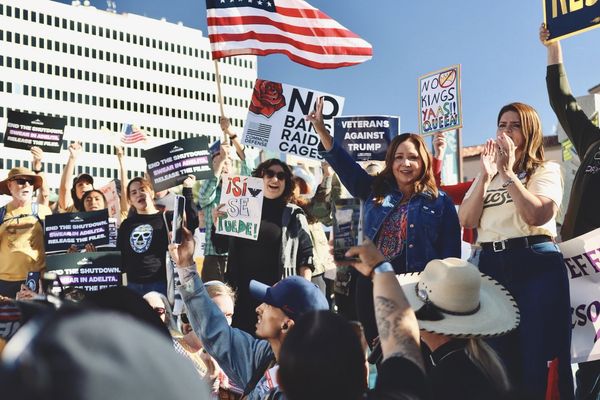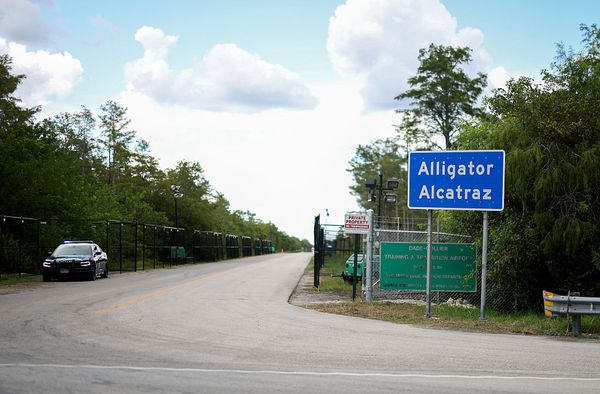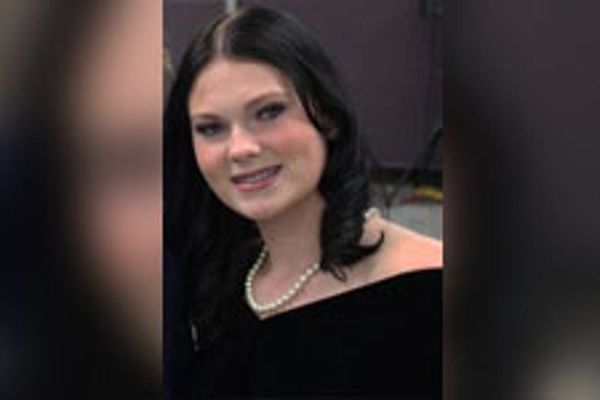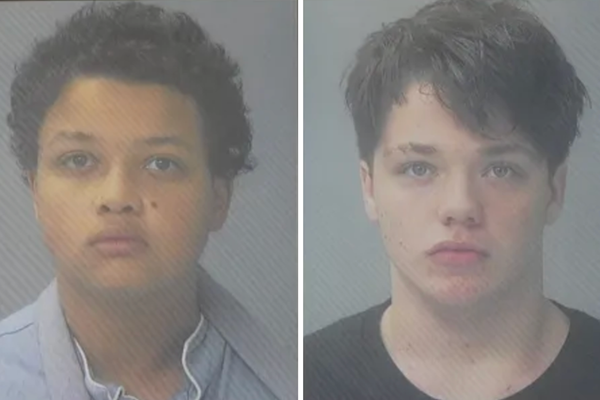
“I think the world has just changed,” Noel Clarke told the judge while giving evidence in his libel case against the Guardian. “I think we can all agree that things that were acceptable 10, 20 years ago are just no longer acceptable.”
While the actor also vehemently denied many of the claims against him, that, in essence, was one of the arguments he presented to the court.
He was the victim.
Twenty-six witnesses who gave testimony against him over the course of a five-week trial, including women who described all manner of bullying, and professional and sexual misconduct, painted a very different picture.
In Friday’s high court ruling, the judge who presided over the case, Mrs Justice Steyn, came down clearly in favour of Clarke’s accusers. The Guardian ran two defences: that the articles about Clarke’s sexual misconduct were true, and that their publication was in the public interest. Steyn found overwhelmingly in favour of the Guardian on both counts.
In contrast, she found Clarke was “not a credible or reliable witness”, concluding that he was “untruthful about most of the allegations, in his efforts to salvage his career”.
Clarke’s claims of conspiracy
In his legal action over the Guardian’s articles accusing him of sexual misconduct, the former Doctor Who actor decried a “blanket [modern] lens” being cast on past actions. Dance moves at the Notting Hill carnival would be considered “assault” in other cultures, he said, and anyone his age who went to university would know that “uni lads and things, people get crazy and the things that happened back in those days would not be acceptable now”.
It was a theme echoed by Philip Williams in closing submissions, in which Clarke’s barrister highlighted the Benny Hill and Little Britain series as productions that would now be considered “inappropriate” as he said Clarke had been a victim of “historical revisionism”.
But inappropriate sexual comments – or “banter” as Clarke sometimes referred to them – was just one of the accusations he faced in the Guardian’s reporting and defence of the case. Others included bullying, taking and sharing explicit videos and photographs without consent and unwanted sexual contact.
Attempting to rebut the accusations, Clarke, the first witness on the stand, ran a variety of arguments, which included flat denial that most events ever took place and that his female accusers had consensually participated in and/or initiated behaviour he was being blamed for.
Clarke also alleged a conspiracy between people who had grudges against him, who had either collaborated with the Guardian’s journalists or duped them, saying his nine-year-old son had made “a little chart” showing the connections between his accusers.
In her judgment, Steyn unequivocally dismissed such claims. She found the evidence of sexual misconduct made by the women who gave evidence in court – and even one who was unable to – to be true. Clarke’s conspiracy claim, the judge concluded, was “born of necessity, in the face of the large body of witnesses giving evidence against him”. The notion that Guardian journalists had engaged in a conspiracy, she ruled, was “unfounded and meritless”.
During his testimony, he at times laughed off accusations but also wept and showed flashes of anger towards the Guardian for having “smashed my life”. He appeared ruffled when he noticed that one of his accusers, the Gangs of London actor Jing Lusi, was watching him give evidence, and questioned whether it was allowed (it was).
Clarke spent more than three-and-a-half days in the witness box, longer than all of the other witnesses his legal team called on his behalf combined. This was partly because they were mostly character witnesses who could not directly contradict the accusations against him.
The most notable exception was the testimony of the actor Louise Dylan, who said that an allegation that Clarke had groped her at a wrap party was untrue. The allegation, by Clarke’s former creative partner Davie Fairbanks, had never been reported by the Guardian in any of the published articles. It was brought into the libel claim by the Guardian’s inclusion of it in its amended defence as an example of behaviour by Clarke that supported the meaning of the articles.
The judge accepted that Clarke did not grope Dylan, but found Fairbanks to be a credible witness who honestly believed the incident that he recounted, but initially misdescribed the location of the incident.
Other witnesses called by Clarke’s legal team were limited to attesting that they had never personally seen him engage in inappropriate behaviour or, following in the footsteps of his evidence, casting aspersions on the character of his accusers.
His wife, Iris, claimed that Gina Powell, a film producer and documentary maker who worked for her husband from 2014 to 2017, was a liar who was “infatuated by him”. She said of Fairbanks: “Not that I have anything against it, but he smokes a lot of weed. He is self-destructive.” She was unrestrained in her anger at his accusers and the Guardian, sarcastically referring to its staff in court as “our lovely people in the back there”.
Philip Dore, a childhood friend of Clarke who worked for his production company Unstoppable from 2014 to 2015, told the court he saw Powell “grope” Clarke, who wrote and produced the Kidulthood trilogy, at a film premiere. Gavin Millar KC, representing the Guardian, challenged the use of the word “grope” in light of Dore describing it variously as “friendly” and Powell “having playfully touched his arse” but the witness insisted it was accurate.
Clarke’s eight witnesses (excluding himself) were done and dusted within two-and-a-half days. Another six who were anticipated to give oral evidence did not do so. One of them was Arnold Oceng, who appeared in Clarke’s films Brotherhood and Adulthood. When he could not be traced, a witness summons was issued and Steyn warned that he could face contempt of court proceedings if he did not show, but to no avail.
‘Shock and shame’: the testimony of the women
The trial then moved on to the Guardian’s two defences: that the allegations in the articles were true and that they were in the public interest.
The 29 “truth” witnesses included 21 key witnesses who said they had experienced misconduct by Clarke themselves or directly witnessed it. They were mostly women, some of whom were granted anonymity and two of whom – Powell and Naome Morris – gave evidence from behind a screen.
Much of the evidence spoke to the specific allegations contained in the Guardian’s reporting but there were also accusations never previously published.
One of the witnesses, Imogen*, said she was a “wide-eyed” 20-year-old actor and huge Doctor Who fan when she met a “sexually threatening” Clarke for dinner at Soho House in central London in July 2014. She said she told Clarke she was 17 in the hope it would deter him from talking about sex. It did not work; he suggested they go to his flat to have sex and that he could take photos of it.
Also not previously published was the allegation by Penelope* that Clarke got an erection when filming a sex scene with her and touched her with his penis at the entry to her vagina. In her witness statement, she said: “When he first took down his trousers and pants, I felt his penis land on my pubic area. I tried to move myself up in the bed slightly so there would be distance between our genitals, but then his penis was touching me in between my legs right at the entry of my vagina.
“He was so close that I recall being worried in case he moved in further or ejaculated.”
Some witnesses were asked by Philip Williams, representing Clarke, why they had not told anyone about their allegations when they happened. Penelope said it was because she felt “shock and shame”.
Williams also questioned several women about why they would not just leave situations they were uncomfortable with, whether filming sex scenes or being propositioned in a restaurant, and why in some cases they kept working with Clarke or stayed in contact with him afterwards.
In response, they pointed to the sexual politics of the industry and the importance, as women, of not making enemies.
Powell, who faced questioning from Williams about her sexual history and experience, and Johannah Whyte, an actor and digital content creator, whose stage name is Jahannah James, both claimed Clarke kept naked photos of women he had sex with as “collateral” in case they ever wanted to speak out about him or tell his wife.
In her witness statement, Powell said that in a car on the way to a meeting, Clarke “grabbed me in the genitals, through my dress and underwear” and then told her she did not “deserve” to go into the meeting and should wait outside. When Williams asked her why she did not email Clarke afterwards to say that he had gone too far, Powell said she was in shock. “It felt like I was trying to leave an abusive relationship,” she said.
Powell, Whyte and Lusi all told the court that Clarke used the example of Adam Deacon, his former mentee, who was convicted in 2015 of harassing Clarke, as a cautionary tale of what happened to those who crossed him.
Imogen said: “It was pre-#MeToo. It was pre women standing up for themselves. I have never seen a woman stand up for themselves and it go successfully. At the end of the day, the industry is so fickle, it can turn in an instant. There is an element where everybody is scared of stuff like this and [that’s] why I had never spoke up about it. I was not in the Guardian article, I chickened out, I was too frightened.”
It emerged that Imogen had been sent a legal letter by solicitors for Clarke last year, only two months before the pre-trial hearings were due to begin, which Millar said threatened her with prosecution for circulating allegations about him.
Millar argued it was “witness intimidation” but this was denied by Clarke, who said he was just trying to get her to switch sides. “It is not uncommon for people to play for one football team and then play for another football team,” he said. “It happens. You get transferred and that was the intention.”
Fairbanks provided the most dramatic moment of the trial. He said he had found a cache of 15 pictures of Ivy* on his hard drive that, he claimed, Clarke had sent him. Ivy told the court she had never seen the images previously and believed they were taken without consent. The judge found that Ivy’s answer was an honest one but that she probably knew and consented to Clarke taking those photographs.
Williams described it as an “ambush” and accused Fairbanks of seeking to pervert the course of justice.
When Clarke was recalled to address this specific issue he denied sending the photos to Fairbanks, whom he accused of stealing them. Clarke said the photos were consensual, he took them for “aesthetic” reasons and eventually would have deleted them if they had not been stolen by Fairbanks.
During testy exchanges with Millar, Clarke initially said Fairbanks had “all levels of access [to his devices]”, sometimes posting on Twitter, now X, for him, but when Millar asked if this was appropriate given that he stored naked pictures on his laptop in a folder that was not password-protected, Clarke said Fairbanks only had access for “emergencies”.
While cross-examining Fairbanks, Williams initially suggested he had stolen the photos with the idea of weaponising them. But given they had still been friends when they were allegedly stolen, Clarke said Fairbanks had initially taken them “for his own sexual and perverse gratification” and only after they fell out decided to retain them for use against him.
The Guardian in the spotlight
After Clarke’s second time on the stand, it was the turn of the Guardian’s journalists, including Lucy Osborne and Sirin Kale, who wrote the story together, the Guardian’s head of investigations, Paul Lewis, who oversaw it, and the editor-in-chief, Katharine Viner, who ultimately signed off on it. The deputy editor, Owen Gibson, and the head of audio, Nicole Jackson, also gave evidence.
They faced questions about the deletion of Signal messages journalists had exchanged relating to the investigation, which had already formed the basis of an unsuccessful attempt to strike out the Guardian’s defence before trial.
Dismissing that application, Steyn had found that the claim made by Williams that, in deleting the messages, the Guardian had fabricated evidence and perverted the course of justice was “a grave allegation [that] should not have been made and publicly aired without foundation”.
She found the deletions were in accordance with the Guardian’s data minimisation policy, but that did not stop Williams revisiting the issue during the trial, accusing Lewis of trying to “hide the evidence”.
Lewis responded that the messages in question were “micro-level chats, informal chats” between journalists which were never customarily retained, unlike other documents that were material to the investigation.
Williams also questioned the credibility of the sources for the Guardian’s reporting, including through the lens of race.
Clarke’s barrister suggested to Kale that she was assigned to the story because she was a woman of colour and said that none of the defence witnesses who gave evidence in court were black.
Kale replied that some of the journalistic sources were black women and women of colour but some “felt it was more difficult to speak publicly about such matters, given that Mr Clarke was also a very successful black man”.
Williams asked Osborne if she was aware that Ieva Sabliauskaite, who alleged that Clarke took a picture of her underwear while she was dancing and attempted to show it to their colleagues, was wearing a mini-dress at the time.
Osborne replied: “Sorry, but I do not think it makes any difference whether she was wearing a short skirt or not.”
Similarly, he said Osborne should have taken account of the fact that Sabliauskaite was “heavily intoxicated”, to which the journalist replied: “I do not think it matters either way if she was drunk or not drunk. He took a photograph, according to the allegation, and then showed it to people the next day.”
In his closing submissions, for the fifth time in the trial, Williams reached for his favourite analogy: that the Guardian’s story had “more holes than a colander” and went so far as to describe its journalists as “rogue”.
Millar said the idea that the truth witnesses “were all doing a thing as serious as lying to the high court … is frankly inconceivable”.
Steyn agreed with that assessment. “Mr Clarke’s case that more than 20 witnesses – none of whom are parties or have a stake in this case, as he does – have come to court to lie is inherently implausible,” she said.
*Not their real names







